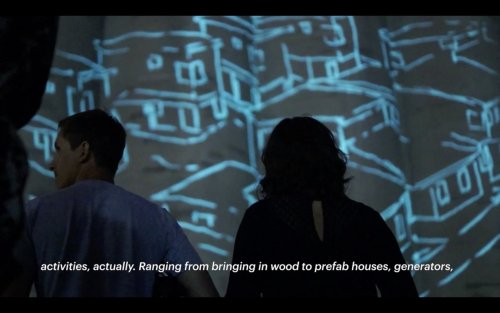PROJECT
Tent City Projection
Patricio Dávila, Dave Colangelo, Cathy Crowe, Beric German
ArtSpin 2014, Toronto, Canada
The area around the abandoned Victory Soya Mills silos at the foot of Parliament Street in downtown Toronto was once known as "Tent City," a home for hundreds of people who were homeless. “Tent City” existed from the late nineties until September 2002, when the residents of Tent City were evicted by the owner of the property, Home Depot.
Many of the residents built their own shelters or brought tents. Some operated computers and television by illegally tapping into the city's power grid. The Toronto Disaster Relief Committee organized the donation and delivery of supplies and advocated on behalf of the residents at city council.
Tent City was mainly self-governed, as police would not usually enter it unless a major crime was committed. Some residents felt more secure in Tent City than they did in the government shelters and chose to live in a self-regulated area where they could defend themselves.
After the eviction in 2002, the City of Toronto made shelter spaces available for each of the roughly 110 people removed. Toronto introduced rent supplement programs in the following year (2002–2004) by which 115 residents were given access to mainstream apartment units.
The land is currently owned by Castlepoint Realty, Citizen Development Group, and New York-based Continental Ventures. They are planning the largest development project in downtown Toronto which calls for a mixed-use community that will include a hotel, retail, offices and about 2,000 condos. There will be 400,000 square feet of retail and commercial space. No affordable housing is planned for the development.
The Tent City Projection tells the story of Marty Lang, a former resident of Tent City, recorded in street nurse Cathy Crowe's book Dying For A Home: Homeless Activists Speak Out, with archival images from the Toronto Disaster Relief Committee.
Photos by Maggie Chan and Joe Fuda








